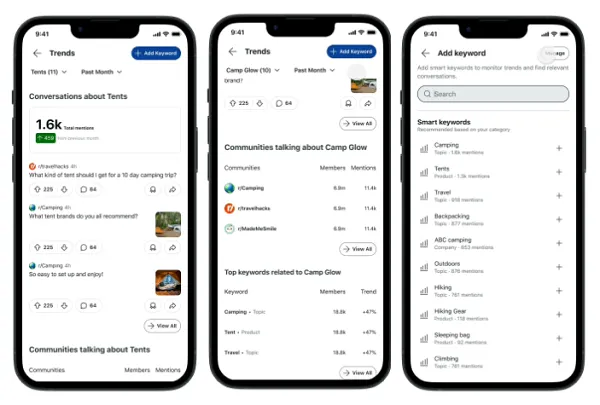[ad_1]
When coaching CEOs over the years, I’m often struck by how little they think about the way they deploy one of the company’s most valuable assets—their time.
With enormous responsibilities and a multitude of interests seeking their attention, CEOs face unique time pressures, and the way they allocate their time has major ramifications for the success of the business. However big and important your previous job may have been, as a CEO, you confront a seemingly limitless array of new and varied stakeholders, each demanding (and often warranting) a place on your calendar. Each constituent group—the board, employees, customers, investors, governments, the media—includes within it numerous and distinct individuals and institutions, each with their own unique needs and goals.
Over the years, I’ve learned (often the hard way) the importance of CEOs keeping control of their agenda in addition to the company’s. Along the way, I’ve identified two steps that help CEOs ensure that their priorities don’t get sidelined by the constant pull of stakeholder management.
Step 1: Define your CEO agenda.
The CEO agenda is not a laundry list of every important initiative in the company; it is not the “goals and objectives” used for determining your bonus (although there can be overlap); it is not even necessarily something you share with anyone else.
It is an expression of your personal priorities for some stated period. And it determines how you will deploy to maximum effect a significant amount of that crucial and finite corporate asset: your time.
Realistically, very few objectives are both achievable over a foreseeable horizon and important enough to warrant the CEO’s personal engagement. So, when working with new CEOs, I advise them to start by listing their top 10 priorities for the year—and then lopping the bottom six or seven off the list.
Together, we pressure test what remains:
1. Needle moving? Will this goal meaningfully affect the success trajectory of the business as a whole?
2. Non-delegable? Does achievement require the CEO’s personal engagement (as distinguished from periodic oversight of others)?
Some examples: a major transaction, addressing a significant governmental threat or opportunity, shaping (or reshaping) the company’s mix of businesses or assets.
For instance, during my tenure as CEO of Pfizer, two of my most significant priorities were completing a $70 billion acquisition that fundamentally reshaped the company, and—together with some of my industry colleagues—negotiating features of the Affordable Care Act, parts of which, as originally proposed, posed significant threats and opportunities for our business model.
Both projects required my direct and ongoing personal involvement and neither could be fully delegated, although, of course, numerous leaders and teams within and outside the company provided essential support. The counterparties—other CEOs, members of Congress and the like—understandably wanted to deal with the top decision maker.
Step 2: Time for a reality check.
Once you’ve defined your agenda, you can examine how you’re spending your time and compare it to your stated priorities. You may be surprised to find a significant mismatch.
I often advise CEOs to have their assistants analyze their calendars retrospectively. Look at the past month or quarter and categorize the way your time was allocated. Were you truly focused on your top priorities, or did your days get consumed by routine meetings and stakeholder management?
This isn’t a one-time exercise. Make it a habit to regularly evaluate your calendar against your priorities. It’s an iterative process—sometimes you’ll need to adjust your priorities based on where you actually spend your time, and on other occasions, you’ll need to realign your calendar ruthlessly to match your intended focus.
In either event, you should regularly ask yourself: Am I deploying a significant amount of my time to accomplish things that only I can do and that will materially contribute to the company’s success?
As CEO, you should devote substantial time to providing visibility and accessibility to key constituencies. This includes town halls with employees, meetings with investors, engaging with government officials and much more. Each of these groups—and the various subgroups and individuals within them—want and deserve your attention and your guidance. Often, they will ask you to make decisions (and sometimes you should). But, while crucial, these activities can easily consume your entire schedule if left unchecked.
The key is to manage and limit time spent on these activities proactively.
Here’s how:
1. Allocate a specific percentage of your time for stakeholder management—perhaps 30–40 percent.
2. Work with your leadership team to allocate this time. For instance, tell your head of Asia operations they get two weeks of your time each year to distribute as they see fit across the region.
3. Set clear expectations with your investor relations team about how many conferences and non-deal roadshows you’ll attend annually.
4. Establish a regular cadence for internal meetings, recognizing that not all direct reports need the same frequency of face time.
It’s also critical to carve out space for unstructured thinking and planning. This might mean blocking off your calendar from 7–9 a.m. each day or reserving Friday afternoons for strategic reflection.
And, of course, do a far better job than I ever did of taking care of yourself, your family and other sources of personal growth and satisfaction.
Maintaining control of your agenda requires effective delegation. Ensure you have the right people in place and that they feel empowered to make decisions. If routine matters are constantly escalating to your desk, it’s a sign that either your team isn’t properly equipped or they don’t feel authorized to act independently.
While it’s important to guard your time zealously, you should, of course, maintain flexibility for true emergencies and unexpected opportunities. The key is to distinguish between genuine crises that require your involvement and routine fires that your team should handle.
By rigorously defining your priorities, regularly evaluating the way you spend your time and proactively managing stakeholder demands, you can ensure that your agenda as CEO doesn’t get derailed. Remember that the truest reflection of your priorities is how you spend your time. Make sure it aligns with what you believe is most critical for leading your organization forward.
[ad_2]
Original Source Link





































































